
This is the second largest family of marsupials (after Didelphidae), with around 54 species placed in 11 genera. Macropodids are found in Australia, New Guinea, and on some nearby islands. Members of this family are of medium to large size (0.5 - 90 kg). Their posture is plantigrade. They have long, narrow hind feet and powerful hind limbs. The fourth toe of the hind foot is the longest and strongest. It lies in a line with the main limb elements and transmits the thrust of hopping (this toe is secondarily somewhat reduced in rock wallabies and tree kangaroos). The outside (fifth) toe is also large. As is true of all members of their order (and members of the order Peramelemorphia as well), macropodids are syndactylous, that is, the second and third toes are fused for most of their length, but end in separate nails that are used for grooming. The hallux is greatly reduced or (usually) absent. The tail is long and heavy in most macropodids, but it is not prehensile. Instead, it is used as a balancing or stabilizing organ. The tails of members of one group of macropodids, the nail-tail wallabies (genus Onychogalea), have a horny tip. This tip is pressed into the substrate for purchase when the animal jumps.
To move fast, most members of this group use a bipedal form of hopping. The animal takes off with a push from its large and muscular hind limbs and lands on its hind feet and tail. At high sppeds (up to 50 km/h!) the tail remains off the ground and is used for balance. At slow speed, macropodids land on their forelimbs and tail, while swinging their hindlimbs forward. Curiously, they can't walk backwards. At low speeds, hopping locomotion is inefficient and expensive energetically. At high speeds, however, it is highly efficient.
While a tail and hind feet specialized for hopping characterize most macropodids, a few have shorter and broader hind feet and a shorter tail than the kangaroos and wallabies. These forms include the tree-kangaroos (genus Dendrolagus), which are excellent climbers; pademelons (genus Thylogale), which often walk with a quadrupedal gait; and the relatively short-tailed quokkas (genus Setonix).
Macropodids have a long and narrow skull, usually a long rostrum, and a head that seems small relative to the size of the body. The masseteric fossa on the lower jaw is deep, and a masseteric canal is present. The macropodid dental formula is 3/1, 1-0/0, 2/2, 4/4 = 32-34 (one species has additional, supernumerary molars). Macropodids have enlarged first lower incisors (diprotodont). Their second and third upper incisors lie lateral to the first (vs. behind first in other diprotodonts). This arrangement results in a continuous cutting edge at the front of the mouth. When the animals bite, the procumbent lower incisors do not meet the upper teeth; rather, they press into a tough pad on the roof of the mouth, located just posterior to the upper incisors. This arrangement is very much like that seen in bovid and cervid artiodactyls. The canines are absent or vestigial, and a substantial diastema separates incisors and cheek teeth. The pattern of tooth replacement is unusual. A young kangaroo has 2 blade-like upper premolars, which are soon shed and replaced by a third premolar (which is also blade-like). The molars erupt in succession, with the first falling out and others moving forward as the animal grows. The molars of macropodids are hypsodont, quadritubercular, and either selenodont or lophodont or a combination of the two forms.
Macropodids are grazers and browsers. They have a complex sacculated stomach, and the compartments serve as sites for fermentation (digestion) by microorganisms. Some species even regurgitate food for additional chewing. Most macropodids are nocturnal, while a few are diurnal or crepuscular.
Macropodids have a well developed pouch that opens anteriorly. Their reproductive cycle is characterized by a period of embryonic diapause, during which the blastocyst suspends implantation and development. At times, females of most species may be supporting young of 3 litters -- one in the uterus, one residing full-time in the pouch and attached to a nipple, and the third living out of the pouch but returning to nurse.
Some of the large macropodids have thrived since European colonization, while others have declined as a result of hunting, habitat destruction, and predation and competition by introduced species. A few species have been lost entirely.
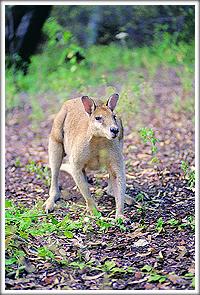 agile wallaby |
 antilopine wallaroo |
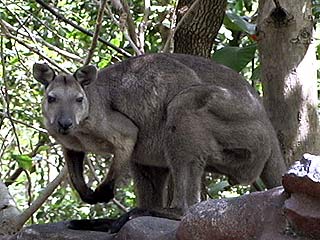 black wallaroo |
 eastern grey kangaroo |
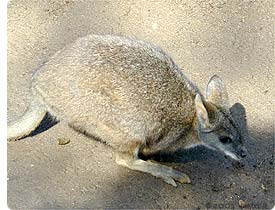 parma wallaby |
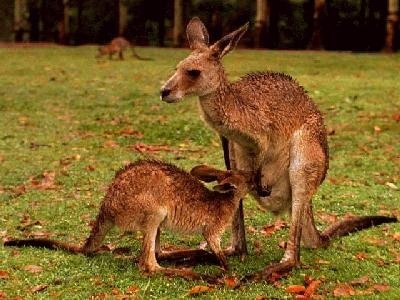 red kangaroo |
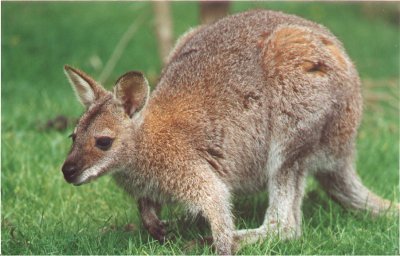 red necked wallaby |
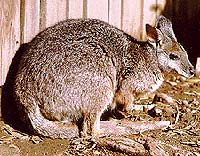 tammar wallaby |
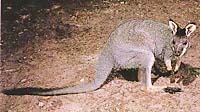 western brush wallaby |
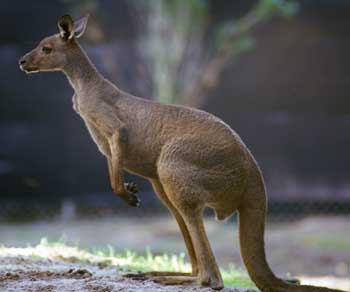 western grey kangaroo |
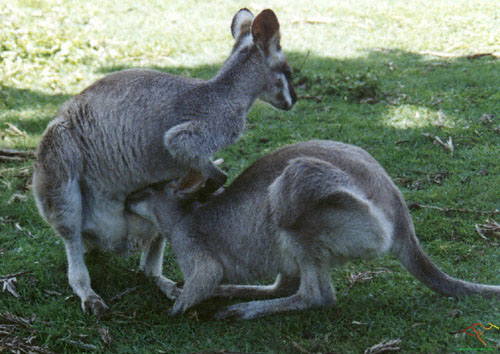 whiptail wallaby |
Family Acrobatidae Family Burramyidae Family Macropodidae Family Petauridae Family Phalangeridae Family Phascolarctidae Family Potoroidae Family Pseudocheiridae Family Tarsipedidae Family Vombatidae<<<<<<<>>>>>>> ARTIODACTYLA CARNIVORA CETACEA CHIROPTERA DASYUROMORPHIA DERMOPTERA DIDELPHIMORPHI DIPROTODONTIA HYRACOIDEA INSECTIVORA LAGOMORPHA MACROSCELIDEA MICROBIOTHERIA MONOTREMATA NOTORYCTEMORPHIA PAUCITUBERCULATA PERAMELEMORPHIA PERISSODACTYLA PHOLIDOTA PRIMATES PROBOSCIDEA RODENTIA SCANDENTIA SIRENIA TUBULIDENTATA XENARTHRA
Email: eradani7@aol.com